Wildflower Hiking at The Antelope Valley Poppy Reserve
Driving through California in winter and spring is a completely different experience than summer or fall. The yellowish and brownish meadows then glow in green colors and wildflowers flowers sprout where they find the right conditions. The California poppy is the state flower and the one that is omnipresent in spring. A remarkable place to admire the reddish beauty is the Antelope Valley Poppy Reserve. A place that looks in summer like the sun must have burnt every trace of life to the ground and it is hard to imagine that there is any time during the year where something, besides maybe a cactus, could thrive there. In spring, however, nature proves otherwise. Then, green grass together with yellow, orange and even purple flowers are making their way through the seemingly rock-solid ground that got so incredibly dry during the unforgiving summer.
After weeks of relentless rain, spring was finally rolling in, preparing California for the approaching, rainless summer. While predicting the future isn’t generally simple, one thing is certain: winter marks the rainy season, and summer will be bone-dry—aside from coastal fog and the occasional brief drizzle on random summer days.
On a Friday evening, with enough time to hit the road before sunset, we found ourselves driving through lush, green rolling hills—the same hills that had burned in the fall, now transformed into a landscape straight out of Teletubby land or a classic Windows 98 wallpaper. It was magical to see them carpeted with life once more.
After passing these vibrant hills, we drove through California’s agricultural heart, heading toward the outskirts of the Mojave Desert. As the sun set behind us, we continued through the surreal scenery, the world around us swallowed by darkness for hours. We finally arrived at our motel in Wheeler Ridge, about 50 miles from our destination, exhausted from the long drive. Without hesitation, we fell into bed and drifted off to sleep.
It was a sunny morning when we continued our drive to the Poppy Reserve. It was still rather early in spring, yet it felt like a summer morning in Central California. Our motel was conveniently located on Interstate 5, and we had another hour to the reserve ahead of us, so we quickly packed our barely unpacked stuff and headed out. On the way, we could already spot some wildflowers in the distance and got excited about what might await us. Just before we reached the poppy reserve itself, we discovered a carpet of yellow blossoms under majestic Joshua trees on the side of the road.
We arrived shortly after 10 a.m., which seemed ideal, as the temperature was already pleasantly mild, and the line outside the parking lot was not too bad. While slowly but steadily approaching the entrance gate, we could already make out clusters of vibrant yellow and orange flowers between patches of more restrained green. As we had finally paid and found a spot to park, we were anxious to escape the crowded parking lot and began exploring the area.
On this day at the very beginning of April, it appeared like the vibrant, golden-orange poppy flowers had just begun their annual spectacle. It was already 11am as we finally started our hike and while I love the solitude and peacefulness of the earlier morning hours, I knew that poppies love sun and warmth and would not open until these conditions were met.
The preserve has seven miles of trails that wind through the landscape. The trails meander through the fields of wildflowers and climb gently to hills that offer panoramic views of the blooming landscape below. While we hiked along the trails, we noticed that even the areas that had seemed less remarkable from a distance revealed their true beauty up close. They, too, were populated by wildflowers, though not as densely, allowing a glimpse of the ground between blades of grass and shrubs. At this point, I couldn't help but remember once again what the California landscape, even the regions outside the desert, had looked like just a few months ago - rolling, grassy hills that resembled sand dunes. Now we were standing in the desert, immersed in such a lush environment sparkled with so many colors, while the sun wasn’t buring, but felt just pleasantly warming the atmosphere.
It was striking to observe how, even now in spring, the soil itself still seemed so compact and dry that it was hard to imagine how so many seeds had managed to break through it.
Such a magical spectacle: Vibrant orange poppies emerged from the compact soil, which appeared bone-dry once again.
While the preserve bears the name of the California state flower, it is not the only wildflower species that thrives there. In addition to the poppies, the trails were embedded in vast fields of goldfields, lacy phacelias (the purple flowers in the picture below), and other species that added various color splashes to the orange.
The further we made our way up the hill, the fewer people we passed. Again and again, we turned around to see how the landscape now below us appeared. The flower fields that we had seen up close were now visible as very distinct clusters of color in a sea of green. From the distance, we could catch a glimpse of snow-capped mountains, which made the scenery even more surreal.
When you look closely, you’ll spot the snow-capped mountains in the distance.
A particularly exciting encounter was with a cactus amidst the dense flower fields — what a rare and fascinating sight! There was so much to discover — some more apparent to the eye, some more hidden.
After spending some time on the ‘peak’, we slowly descended back to the parking lot. Arrving there, we looked back at the colorful hills, knowing that this special place would be one to remember.
Know Before You Go
Hiking
The fields are best experienced in combination with a hike along the trails of the reserve. The entire trail system is 7 miles long and includes some rather gentle hills. It basically consists of several loops, so taking short-cuts is possible. As many just take some pictures of the fields close to the parking lot, hiking allows for a less crowded and more memorable experience.
Here you can find a link to the official trail map as published by California State Parks.
Best Time to Visit
Depending on the year, the wildflower season starts as early as mid-February and can last through May.
The pictures above were taken in 2023, which was an above-average bloom year.
2024/2025 had a rather dry winter in this area, so blooms will probably be more limited this year.
It’s best to take a look at the park’s webcam to check out how the fields look right now! If you’re not looking during the few weeks of spring when the poppies are blooming, you probably gonna see a lot of brown shades.
Also, check the poppy reserve’s instagram for current updates on blooms and other info.
California poppies love the sun and close up when she’s not out. They are also not a big fan of rain or cold wind. So, the flowers might be closed very early in the morning and on cloudy, rainy or cold & windy days.
Weather in Spring
Even the beginning of spring can be really hot in the desert with cool mornings and evenings, so best to dress in layers if you go towards the morning or evening. Winds may be strong too at this time of year.
Leave No Trace & Related Rules
Stepping in the flower fields to take pictures is neither a good idea for the plants or soil nor for your own health. Rattlesnakes like to hide in the fields, so avoiding a bite is easy if you just stay on trail. ;-)
Picking flowers is strictly prohibited.
Dogs, except service animals, are not allowed on trails.
No drones.
You can find more information on the Antelope Valley Poppy Nature Reserve here.

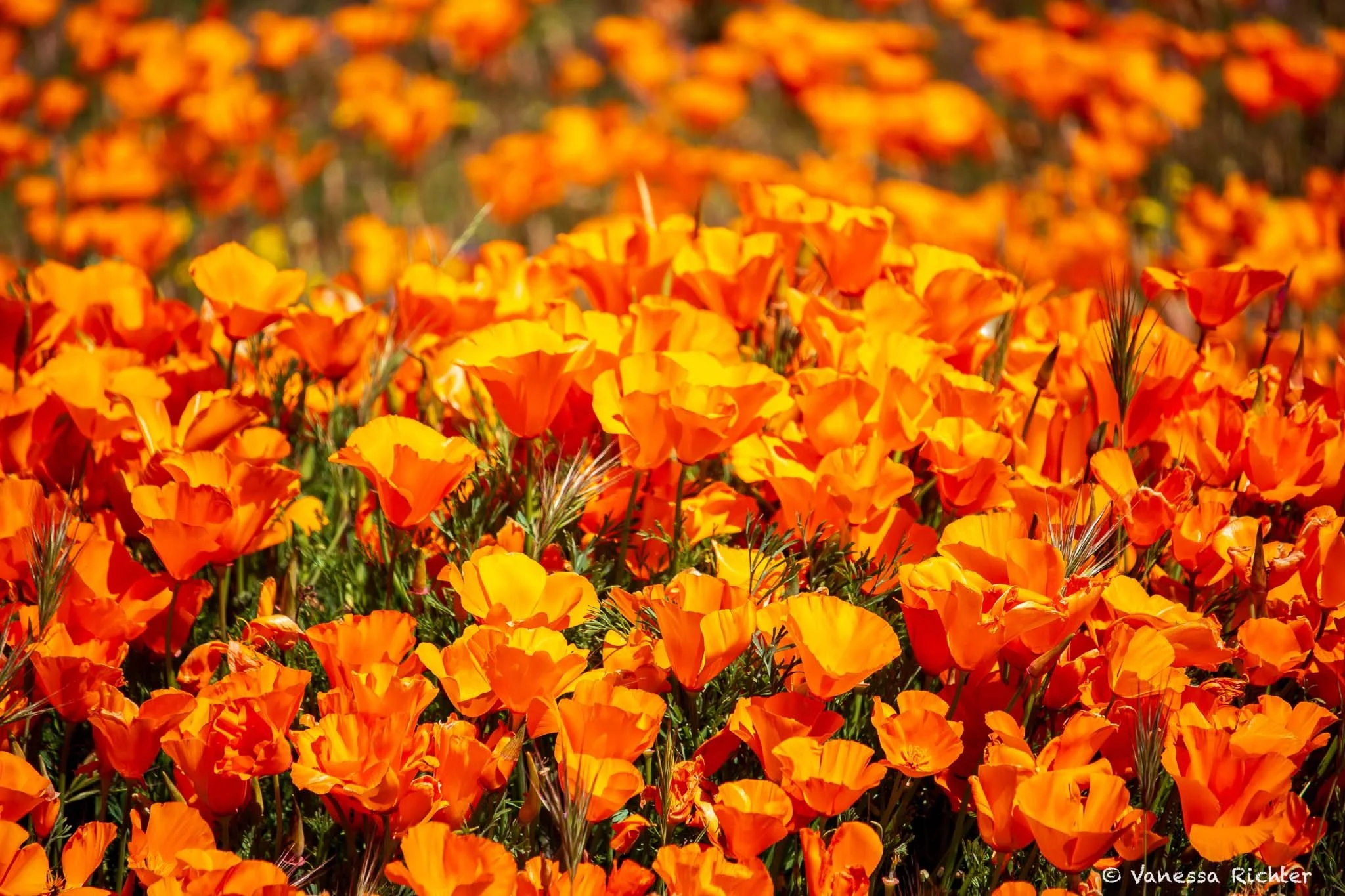
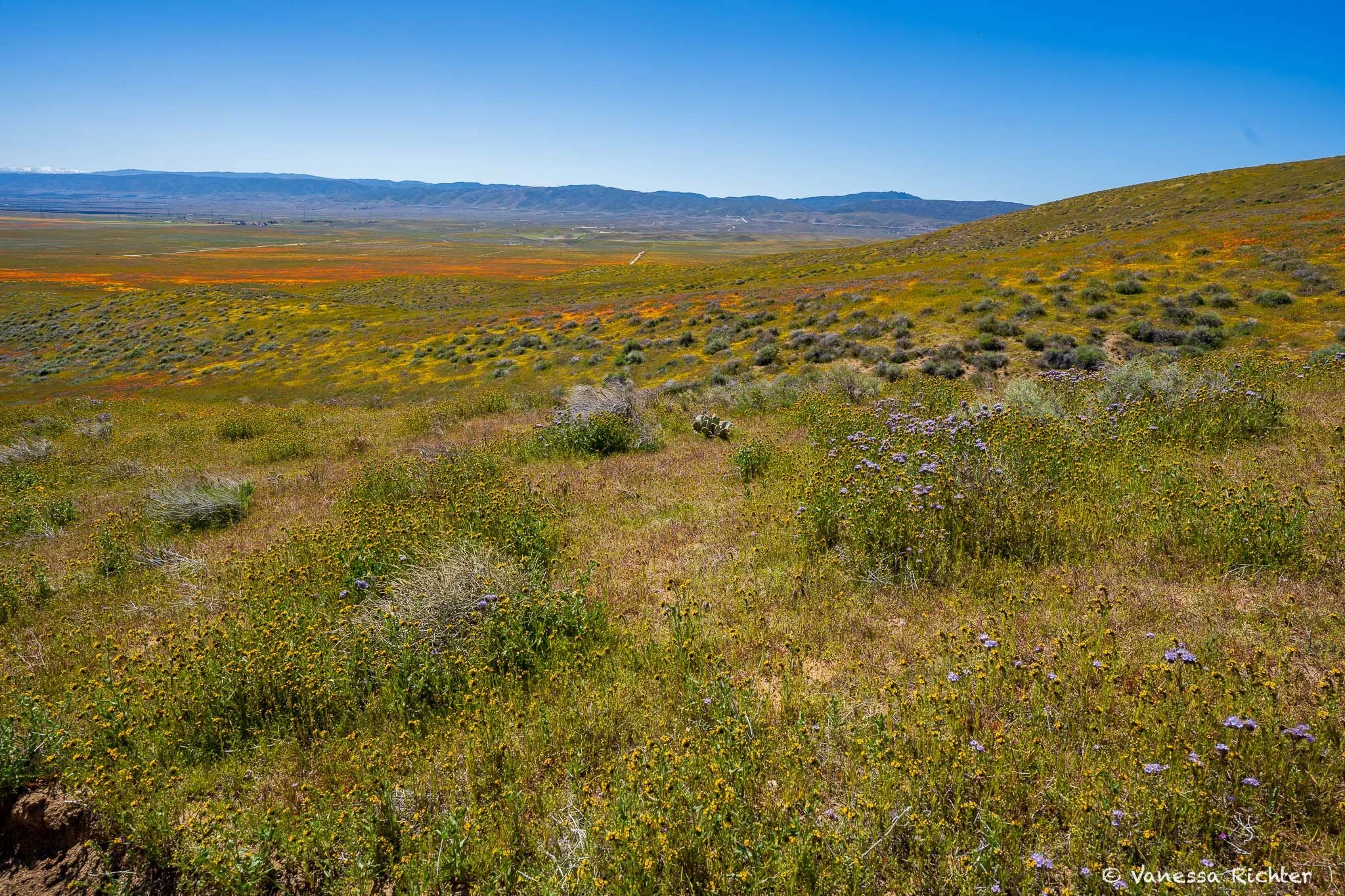
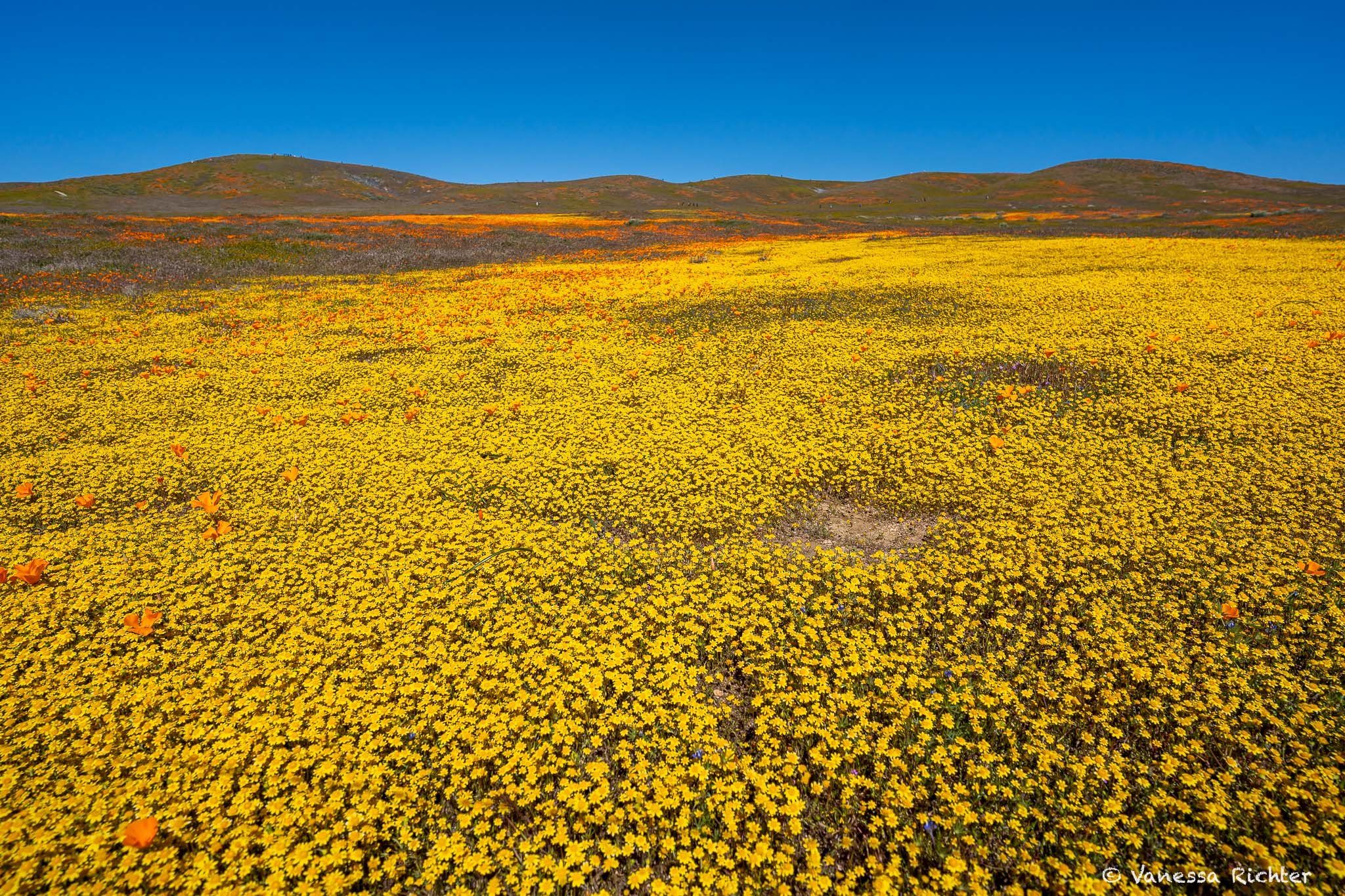
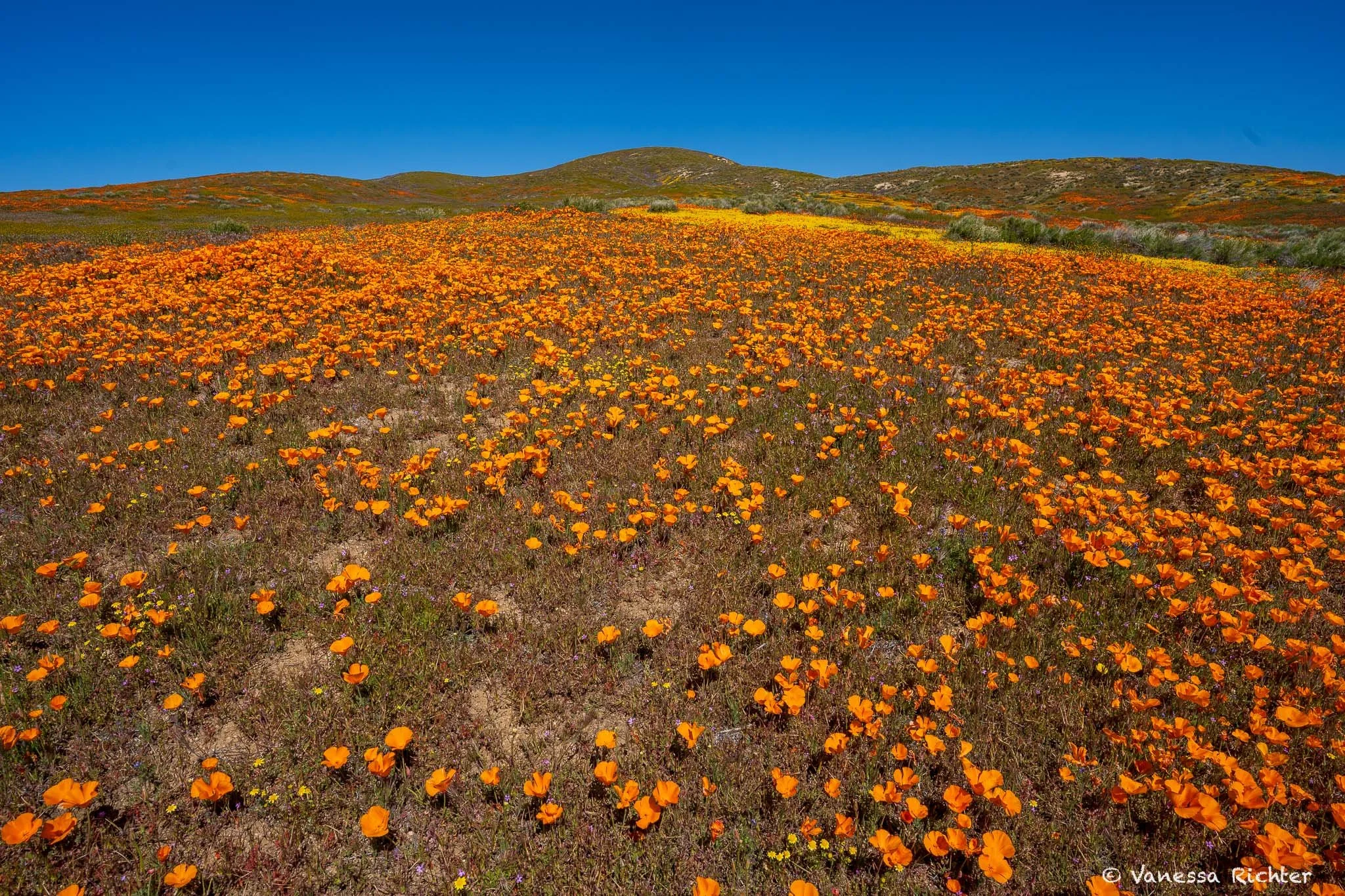
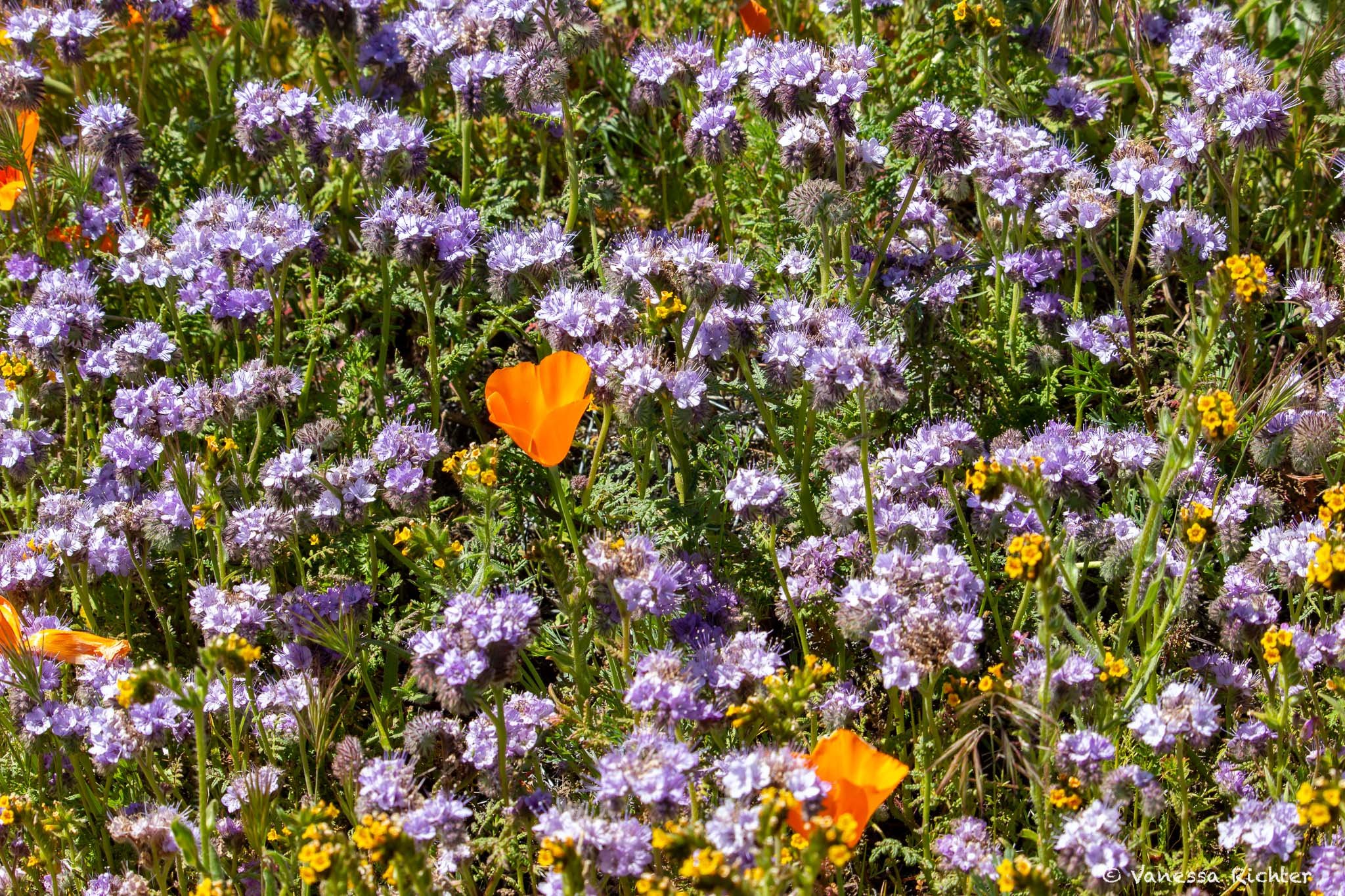
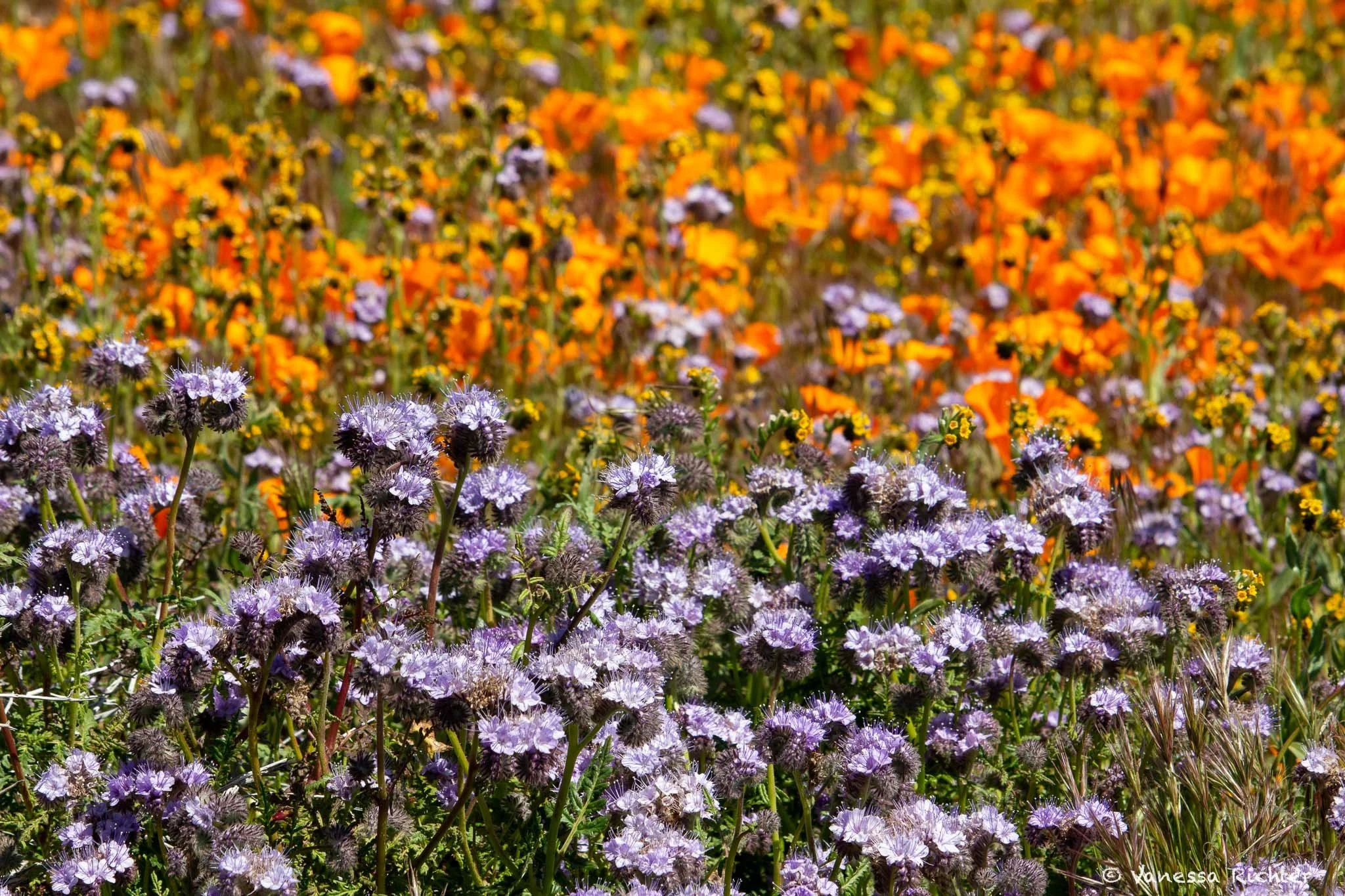
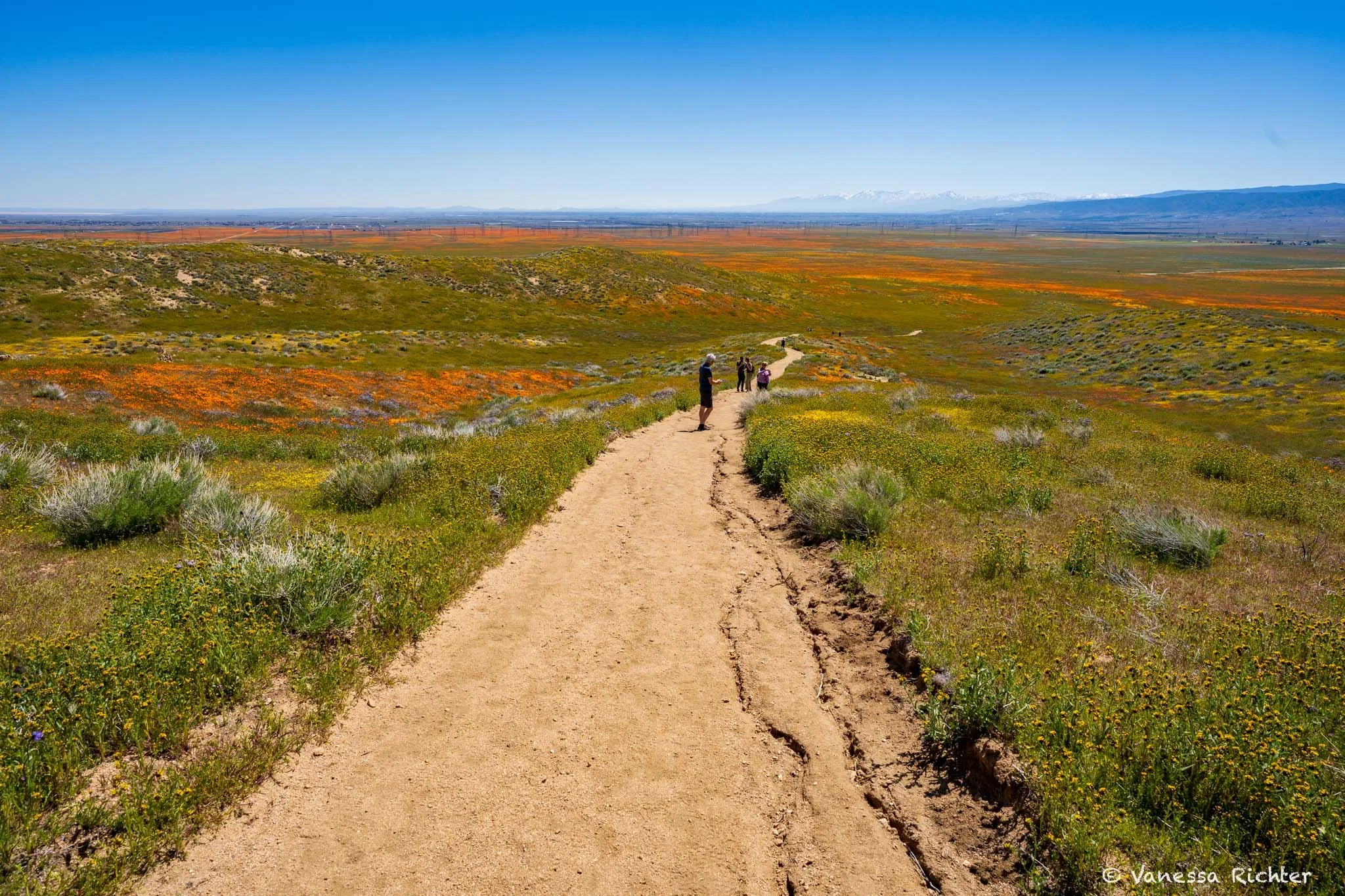

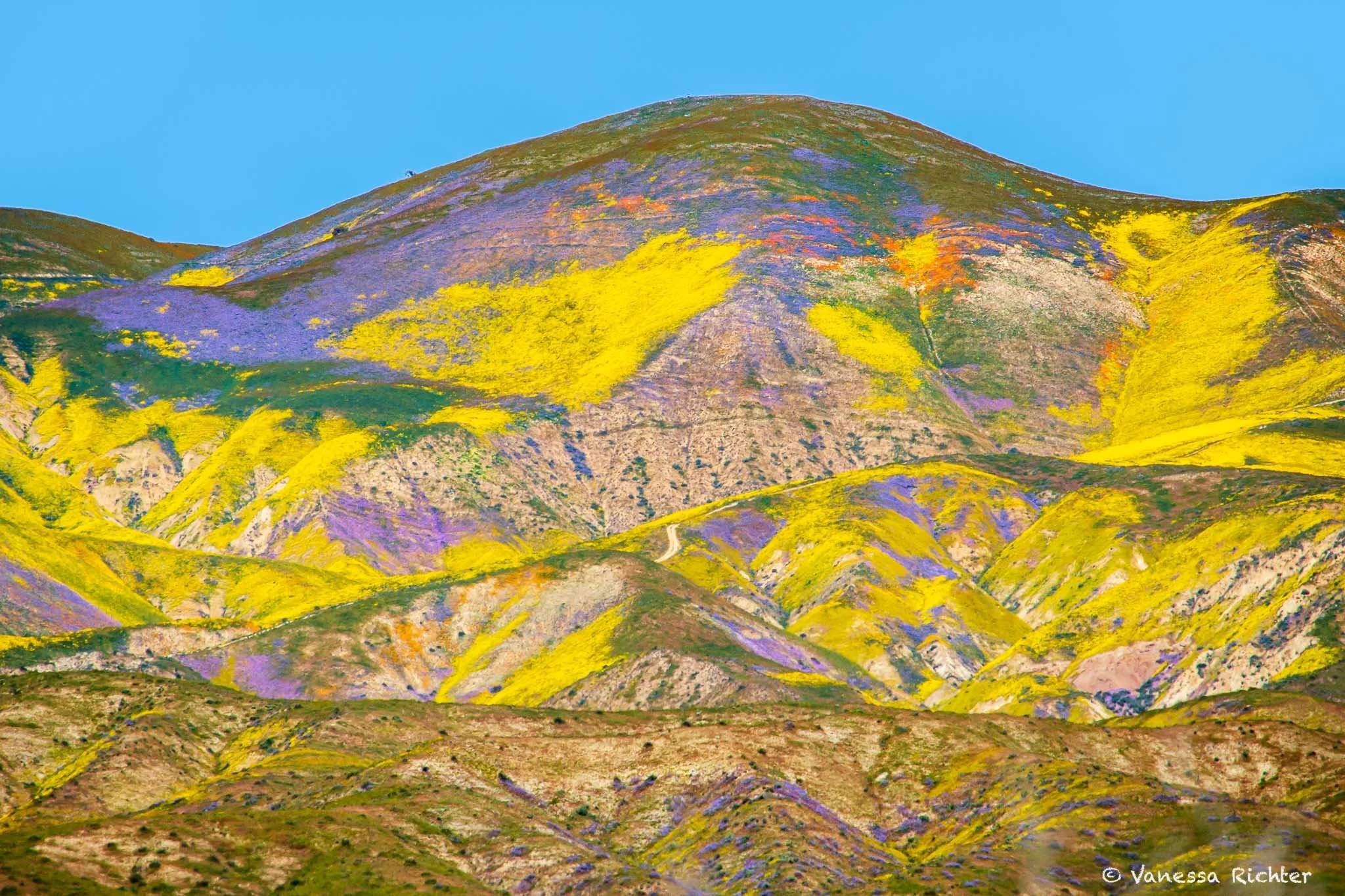
Mori Point, located just south of Pacifica, is a beautiful place on the Californian coastline and is only a short drive from San Francisco. With its rugged bluffs, the wild ocean crashing at the shore, black beaches, carpets of wildflowers in spring, and abundant wildlife, Mori Point is a great example of what is possible when restoring natural landscapes after decades of exploitation.